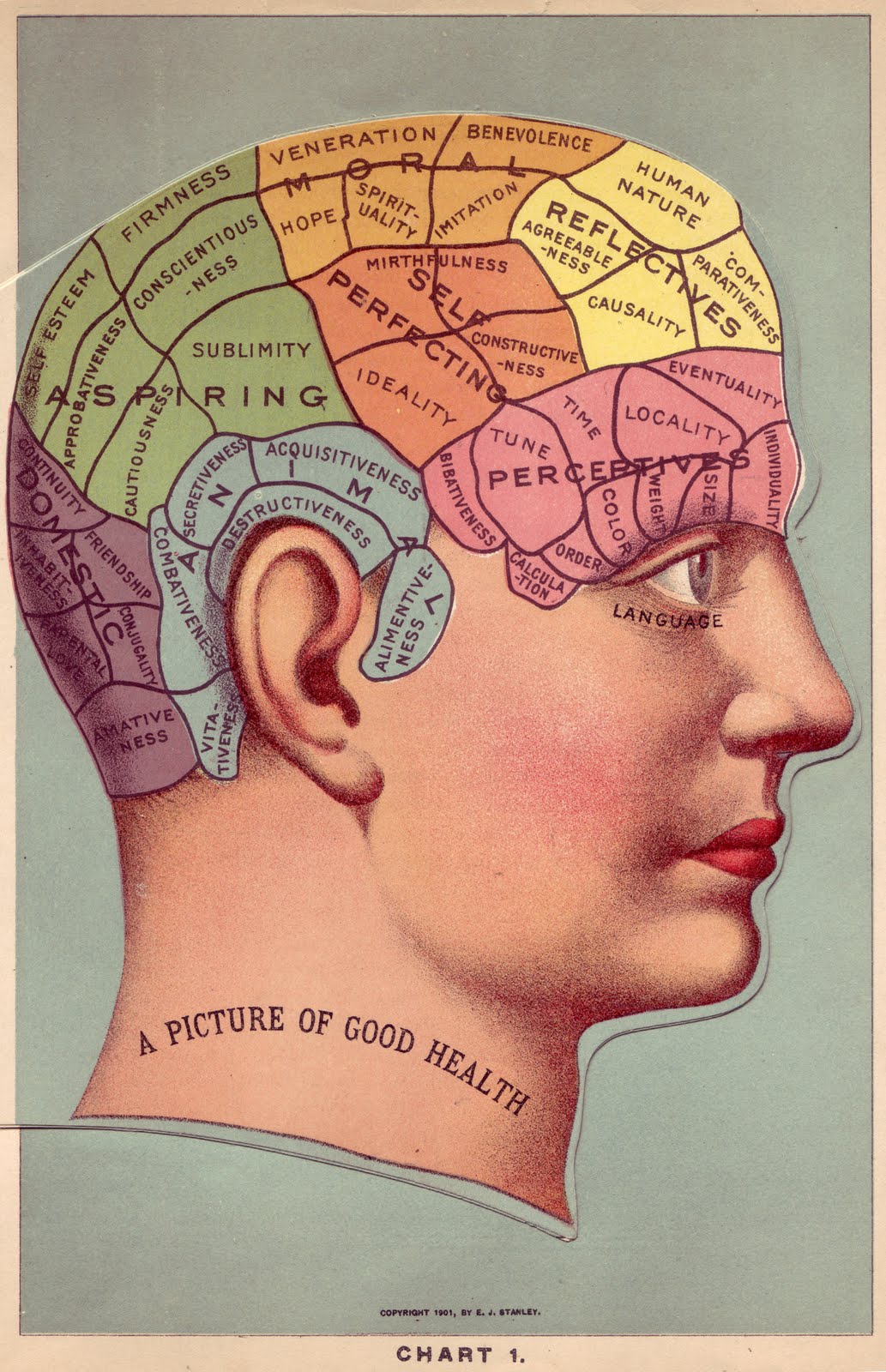Our brain is the most amazing part of our body. This three-pound organ controls all physical and mental states our body undertakes. In can take physical information from the outside world and relay the information to the mind and then take mental thoughts and turn those thoughts into actions. Our brain is so very complex because it contains 40 billion neurons and 400 trillion synaptic connections. In the 1800s, there was a theory that all of the different bumps on our skull could reveal certain mental abilities and character traits such as intelligence, patience, humor, etc. This was called phrenology.
However, phrenology was not very accurate. This idea that the different spots of you head meant something was a new idea though. This lead into more information about what parts of your brain do what such as recognizing faces, understanding languages, personality, etc.
The Parts of the Brain
1. The Brainstem
a. Medulla: the base of the brain stem that controls involuntary actions such as your heart beat and breathing.
b. Reticular Formation: filters incoming information from the spinal cord called stimuli and relays that information to other areas of the brain
2. The Thalamus
a. Thalamus: receives information from all of the senses to higher brain regions
3. The Cerebellum
a. Cerebellum: called "the little brain" and is attached to the rear of the brainstem. It coordinates voluntary movements and balance. Also plays a role in learning knew physical skills such as playing the guitar or another instrument.
4. The Limbic System
a. amygdala: regulates fear and regression
b. hippocampus: emotion, memory, and automatic nervous system
c. hypothalamus: controls actions regarding reproduction, fighting, knowing when to leave a bad situation, and eating.
5. The Cerebral Cortex
a. This is at least 2/3 of the total mass of the brain and is 2mm deep that acts like a layer of bark around our brain. This enables high level functions such as perceiving, thinking, and speaking.
6. The Lobes
a. Occipital Lobe: involved in vision; contains the visual cortex. If this is damaged, this can disrupt consciousness and you cannot perceive objects
b. Temporal Lobes: involved in hearing, understanding language, and storing autobiographical memories; contains auditory cortex
c. Parietal Lobe: involved in sensations of touch, pain, and temperature
d. Frontal Lobes: involved in motor functions such as language, memory, and setting future goals. This is where your personality and morals are stored.
7. Association areas: this area is found in all four lobes and are responsible for integrating information, linking sensory inputs with stored memories



I love this post! I am intrigued by the way you presented the information. Also, reading this made me realize the connection that exists between all the parts of the brain, especially The Lobes. Now I can explain on my blog how the frontal lobes can help students decide on which major they should choose.
ReplyDeleteThank you so much! I am so happy you enjoyed it! It is so awesome to see how your brain literally controls everything that you do.
Delete